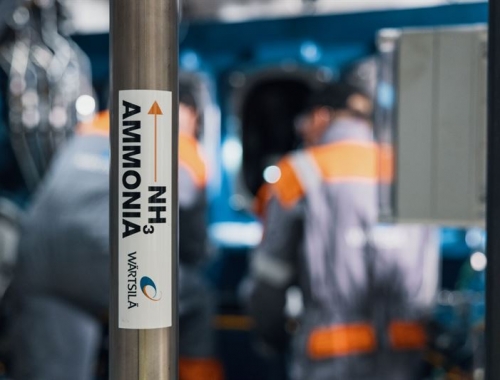Putting bio-LNG to work in decarbonising shipping
SUMMARY
Some research estimates that bio-LNG could cover 3% of total energy demand for shipping fuels by 2030, rising to 13% by 2050.
By Mike WeberPOSTED IN:
From Barcelona to Busan, Seattle to Singapore, the global shipping industry requires vessels to crisscross the planet on journeys that can at times stretch beyond a month in duration. Given the global nature of the sector, finding low carbon fuel options will be critical for the industry to continue to thrive.
And with the International Maritime Organisation (IMO)'s target of reducing shipping CO2 emission intensity by 40% by 2030 and reducing total CO2 emissions by 50% by 2050, sourcing low carbon fuel for vessels has moved to the top of the agenda for shipping companies.
Thus, the emergence of bio-LNG as a marine fuel could be a game-changer for the sector’s decarbonisation efforts. The product is mostly produced by anaerobic digestion of human and animal waste streams, although it can also be produced by gasification of cellulosic waste, such as forest harvest or sawmill residues for instance.
Bio-LNG possesses the potential to reduce greenhouse gas emissions by up to 80% compared to marine diesel on a full well-to-wake basis, according to a study by the Maritime Energy and Sustainable Development Centre of Excellence (MESDCoE) at Nanyang Technology University in Singapore, commissioned by SEA-LNG. If avoided emissions are factored in, bio-LNG, when produced from anaerobic digestion of manure, can realise negative emissions of up to -190% in comparison to diesel. Without any blending issues, bio-LNG is typically sold as a blend with conventional LNG.
Indeed, the potential for bio-LNG to play a key role in decarbonising the shipping industry is significant. The report found that bio-LNG has the potential to comprise up to 3% of the total energy demand for shipping fuels in 2030 and as much as 13% by 2050. By using bio-LNG as a 20% blend with LNG, it could meet up to 16% of global shipping demand in 2030 and as much as 63% by 2050. Ultimately though emissions reduction through use of bio-LNG depends partly on how the bio-LNG is produced and the vessel engines in which it is utilised.
With the strong green credentials possessed by bio-LNG, the product is increasingly becoming available in the bunkering market at ports around the world. According to SEA-LNG, bio-LNG is now available at more than 60 international ports. Meanwhile, the current global fleet of 355 LNG-fuelled ships, excluding LNG carriers, all possess the ability to use bio-LNG as drop-in fuel without modification. And since bio-LNG can be transported, stored, and bunkered in ports utilising the already present LNG infrastructure, expansion of bio-LNG, which currently has annual production of about 30mn tonnes, has a clear path forward.
However, cost still remains an impediment to wide-scale adoption. Although bio-LNG is the most cost-effective biofuel as it is the simplest molecule, it still is about two to three times more expensive than LNG. This obstacle has resulted in some companies searching for fixed pricing agreements with premiums instead of indexation since firms are often nervous of exposure of 10 years on bio-LNG molecules.
While some subsidies have been introduced to promote bio-LNG, a considerable amount of more funding and incentives will be needed to drive the cost down to comparable levels with LNG. However, given the growing efforts to reach the Paris Agreement goals, funding for bio-LNG should figure in future low-carbon initiatives of governments seeking to make inroads on climate pledges.
Nevertheless, the bio-LNG sector looks set for taking off. A recent study by InsightAce Analytic put the bio-LNG market size at $661mn in 2022, while forecasting a CAGR growth rate of 18% from 2023 to 2031 to reach a market size of $2.9bn by 2031.
Indeed, companies are already beginning to bet big on bio-LNG and are locking in capacity at a fast rate with an eye on the new environmental standards for marine emissions about to kick in. As part of the EU’s “Fit for 55 in 2030” programme, large ships weighing over 5,000 gross tons will need to lower GHG emissions by 2% by 2025, 20% by 2035, and 80% by 2050 compared to 2020 levels.
Similarly, with maritime shipping set to be included in the EU’s emissions trading system, shipowners will be required to pay for 40% of their emissions from 2025, 70% from 2026, and 100% from 2027. Against this backdrop, use of LNG as a fuel for vessels will allow operators to compensate for emissions from dirtier, conventional vessels. Blending in bio-LNG offers even more value in this regard.
Certainly, bio-LNG like any nascent industry will be required to clear a number of hurdles on its way to becoming a more mainstream option in decarbonisation efforts. Nevertheless, the building blocks are in place and companies are increasingly getting behind bio-LNG as a key piece in the decarbonisation jigsaw puzzle.








